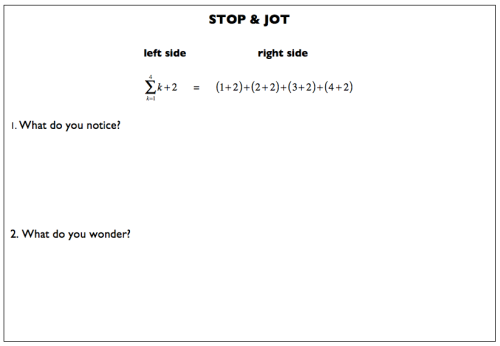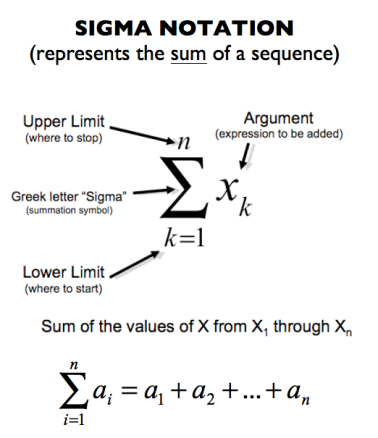
-1. It’s that time of year again. The last day of school. Time to get decompress, reflect, and wonder where the hell the year went.
0. Last year proved to be eventful, but this year actually doubled up on that. Whew. Another change in administration. Another roller coaster ride.
1. Probably my biggest takeaway from this year was what I learned about leadership. A huge part of this was my participation in the Learning Partners program and my role as a Model teacher. Visiting other schools and spearheading change in my school made me realize where I am in my career and expectations that I should have for those around me.
2. I loved my classroom set up this year, especially the U-shaped group structure. It allowed me to efficiently assess student understanding. Also, the desks could easily be pushed together for a more intimate group setting. Next year: systematically establishing interdependency by making group work the norm. This will be huge.
3. Game changer: the video-based professional development that I facilitated this year. I experienced so much growth related to this. A more detailed post coming soon.
4. Over the years my parental outreach has been dismal. This year I was proud that I began sending out a monthly “newsletter” via email that contained upcoming events, class announcements, etc. But about three months in, I fell off. Next year, I want to use MailChimp or a similar service to help with this. This is a must do!
5. I promoted far more inquiry in my lessons this year. I had students doing more – more sense making, more investigating relationships – not just paying attention to procedures. I have a long way to go, but I made significant progress.
6. My homework policy this year drifted into nothingness. I started the year strong and slowly, over time, stopped checking it. It was disappointing. I love the idea of lagging it, but I want to greatly simplify the homework experience. Possibly include a reflection (which I want to heavily promote next year) question followed by 2-5 mathematical problems, 1-2 of which are lagged. I may also go with one weekly homework assignment where concepts aren’t indicated for each problem – similar to an exam.
7. As a means of promoting introspection, I chose to compose one deeply reflective tweet per day during the #MTBoS30 challenge in May. I forced myself, every day, to think earnestly about an aspect of my teaching in a concerted manner. I was pushed out of my comfort zone and it was awesome.
8. Lagging my unit exams was a great experience. I just need to ensure that I don’t fall too far behind, which happened this year. I also liked the audits as a means of keeping student knowledge, and records of their knowledge, current. I’m definitely going to stick with both of these assessment structures moving forward.
9. This year I officially began the process of becoming National Board Certified. It will no doubt be a long, arduous process, but a welcomed one.
10. My interest in robotics declined this year. Instead, I’ve rediscovered and rekindled my long-lasting love for mathematics. Although I’ve taught mathematics my entire career – my wholehearted dedication towards perfecting how I teach the content hasn’t always been there. Things are different now.
11. After a couple of years planning, I kickstarted an after-school bicycle club. Moving on two wheels has long been a passion of mine, so sharing this love with students was special.
12. Reflecting on the goals I set for the year, what didn’t I accomplish? Conferencing with students didn’t happen…like, at all. A complete waste of an awesome table I set up in my room. Earning highly effective. Eh. Thankfully, I’ve moved beyond the whole rating thing this year. The retakes culture in my classroom improved this year, but I still need to do better at promoting/mandating this growth mindset structure. There were many after-school sessions where every student was working on a different concept. It was beautiful. I’ve also raised my expectations for students, but I’m still not where I need to be. I did seek student feedback, but more so at the end of the year. I tried, but still couldn’t manage to have my students effectively answer “why am I doing this?” during lessons.
13. My end-of-year algebra 2/trigonometry state exam results were much better this year. I’m proud (read: disappointed) that I’m getting better at teaching my students how to be better test takers of mathematics.
14. Starting in October, every Friday I sent a Reflections email to my colleagues in the mathematics department. It was always an impromptu collection of highlights and interesting happenings from the week we experienced. It was a way of digesting the week in a positive, motivating way. It allowed me to connect with my department on a personal level and they seemed to enjoy it. I’m so proud of this.
15. My standards-based grading was more focused and worthwhile this year. I am thinking of a shift that puts more emphasis on depth of understanding within the domains of mathematics (and not assess concepts in isolation). I was able to use the performance data to drive instruction and remediation strategies, like tutoring. I also began emailing progress reports to students and parents on a weekly basis, which was a big step forward. Although, the layout of the email could be improved.
16. The Token. I just love this. It created a warm atmosphere that went beyond mathematics and injected a good dose of humanity into us all. There were multiple Fridays when I forgot to initiate the passing, which I’m not happy about. That said, the kids took upon themselves to pass it without me many times. Next year, I want a small, simple poster that displays the current holder of the token.
17. I created a class calendar in my room using whiteboard paper. This was simple, but meaningful. I will make it larger next year. I need to post student birthdays!
18. I got far fewer Friday letters this year. Maybe I should get into the habit of placing the box near the front of the room on Fridays so that we all can be reminded? At the same time, I wrote my students a lot this year – especially while they took exams.
19. I have been highly critical of those making excuses this year, including myself. If something doesn’t happen, it’s because that thing wasn’t a priority. And that’s not necessarily a bad thing. Discover what matters and pour everything you have into it. Don’t look back.
20. This year was a crossroads for me. The 2016-17 school year will bring dramatic changes to my career and school family. I’ve never been more ready for the sunrise that I’ll witness in September 2016. Here’s to writing the next chapter.
bp









